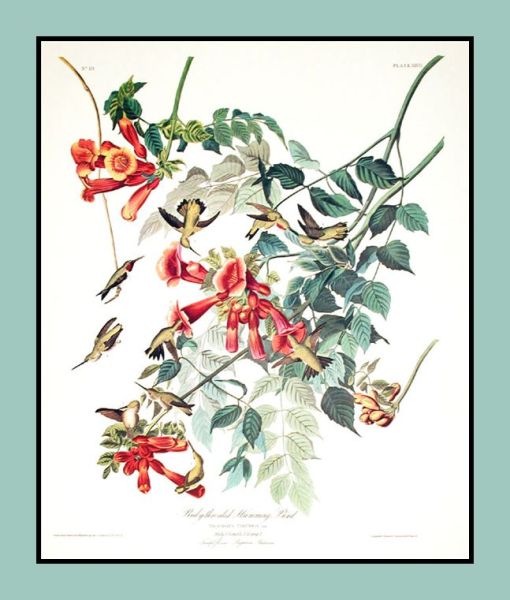
Re-posted today because I had a female Ruby-Throated flirting with me yesterday while I was watering some hanging baskets of flowers. Fearless critter. Seemed to want to frolic in the spray.
Chances are that the first time you saw a hummingbird, you paid it no attention, imagining it to be a passing dragonfly or some other fleeting buzzing bug. In the Eastern half of the US, we have only one species – the Ruby Throated.
This 3-4-inch bird is usually only seen when hovering over flowers, because otherwise he is tiny and darting in flight, and his wings are a humming blur. You have to be very close to hear the hum.
These insect-like birds are probably more abundant in your area than you realize, but if you want to see them often, you need a hummingbird garden. (Those sugar-water hummingbird feeders offer no real nutrition, and the red coloring is thought to be somewhat toxic.) He feeds on nectar and small bugs hidden in the flowers, and prefers flowers which are designed for pollination by hummingbirds – often red in color and vase-shaped for his long beak. Red Trumpet Vine (in photo) is a favorite, as is azalea in the south, but they like monarda too. I find their favorite at my place is Crocosmia – which is in bloom now along with the monarda, and the trumpet vine on my wall. I highly recommend Crocosmia – the bulbs are a bit expensive but, once established, they multiply rapidly and they have attractive foliage. White Flower Farm has a large selection. In the woods, I typically see hummingbirds around patches of Jewelweed, which likes damp areas.
Read more about the Ruby Throated here. How do these fragile creatures make it across the Gulf of Mexico to winter in South America?
The print is Audubon's, the Ruby Throat with Trumpet Vine.
Speaking of hummingbirds, don’t forget the Dixie Hummingbirds.



Flowers, Gospel, and the Ruby-Throated HummingbirdA few fun facts about pre-1900 education in the USThe Caduceus of Hermes and the Staff of AsclepiusBlob of the Week: Slime Mold
Tracked: Jul 15, 07:22
On Maggie's Farm, our Jewelweed (aka Touch-Me-Not) is now in bloom everywhere there are damp, semi-shady spots. Where there is Jewelweed, there will be Ruby-Throated Hummingbirds if you sit down and watch.
Tracked: Aug 13, 19:57